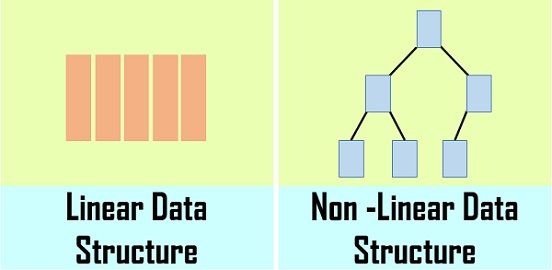Distinguish Between Linear and Non-Linear Data Structure

Linear and non-linear data structures differ in how they organize and represent data:
-
Linear Data Structure:
- Linear data structures organize elements in a sequential manner, where each element is connected to its predecessor and successor.
- Elements are arranged in a linear sequence, meaning there is a specific order in which they are accessed.
- Examples of linear data structures include arrays, linked lists, stacks, and queues.
- Linear data structures are characterized by a single level of hierarchy, with elements forming a straight line.
-
Non-linear Data Structure:
- Non-linear data structures do not organize elements in a sequential manner. Instead, elements are connected in a hierarchical or arbitrary manner.
- There is no strict order in which elements are accessed, and traversal through the structure may involve branching or multiple paths.
- Examples of non-linear data structures include trees and graphs.
- Non-linear data structures are characterized by multiple levels of hierarchy, with elements forming branches or interconnected nodes.
In summary, the main distinction between linear and non-linear data structures lies in the organization and arrangement of elements. Linear data structures maintain a sequential order of elements, while non-linear data structures exhibit branching or interconnected relationships among elements.
Thank you,
